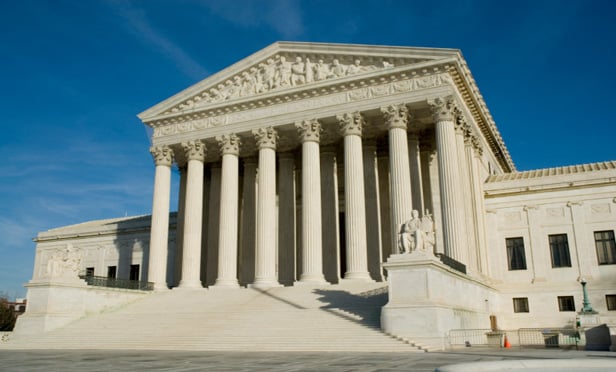Columns & Departments
IP News
Federal Circuit Finds Preamble Not Limiting and Claims Reciting Means-Plus-Function Limitations Without Disclosure of Corresponding Structures Cannot Be Determined Unpatentable as Indefinite in an IPR Proceeding Federal Circuit Finds That District Court Correctly Applied the Disclosure-Dedication Doctrine In Granting a Motion for Judgment of Non-Infringement on the Pleadings
Features

You've Made Your Bed, Now Lie In It – Binding Settlement Agreement Defeats A Post-Settlement Judgment
Holding that the parties' executed agreement mooted the issues in the case, the Federal Circuit recently reversed a district court's decision to grant summary judgment of non-infringement despite the parties' agreement. The decision builds upon prior Federal Circuit case law giving effect to settlement agreements.
Columns & Departments
IP News
Article III Inter Partes Review Decision Precluded By Congress, SCOTUS Rules SDNY: Video Game Makers Not Violating Copyright with NBA Player Tattoos
Features

Practical Tips for Securing Patent Rights for AI-Generated Inventions
While AI is rising as a key commercial player at the global scale with an expected market size of almost $400 billion by 2025, are patent laws around the world equipped to incentivize this revolution?
Columns & Departments
IP News
Federal Circuit: Method of Preparation Claim is Patentable Federal Circuit: Same Party Cannot Join IPR Petitions under 35 U.S.C. §315(c)
Features

Attorney's Fees After Octane: More Chances for Defendants to Even the Playing Field
With fewer restraints after Octane, district courts now have broader discretion to grant motions for attorney's fees. But understanding the circumstances under which exceptionality has been found is critical. Recent decisions by the Federal Circuit post-Octane provide some important guidance on when attorney's fees may be available under Section 285.
Features

You Know What It Is: Taco Tuesday and the Failure-to-Function Doctrine In Trademark Law
The foundational requirement that a trademark function as a trademark has received little attention in the case law. More recently, however, there has been an apparent uptick in scrutiny of trademark use by the USPTO and TTAB, as well as fresh academic attention paid to the issue.
Columns & Departments
IP News
Northern District of Texas: Even Post-Berkheimer, Patent Claims Continue to be Ineligible for Patenting as a Matter of Law When They Are Not Drawn to Particular Technical Solutions or Advances Described in the Specification Federal Circuit: The PTAB Cannot Institute Inter Partes Review on Obviousness Grounds Not Included in the IPR Petition, But Can Consider Evidence of "General Knowledge" in the Art
Features

U.S. Supreme Court Reaffirms the American Rule In De Novo Challenges to the PTO
In 2013, the PTO adopted a new policy under which any party commencing a de novo proceeding challenging a PTO decision would be responsible to pay a pro rata share of the salaries of the government attorneys working on the matter. On Dec. 11, 2019, the U.S. Supreme Court rejected the PTO's new interpretation of the Patent Act and held that the American Rule, a centuries-old principle under which each party bears its own attorneys' fees, does apply to this statute.
Columns & Departments
IP News
Do Not Pass Go? U.S. Supreme Court to Review Federal Circuit's Finding of Justiciability
Need Help?
- Prefer an IP authenticated environment? Request a transition or call 800-756-8993.
- Need other assistance? email Customer Service or call 1-877-256-2472.
MOST POPULAR STORIES
- The DOJ's New Parameters for Evaluating Corporate Compliance ProgramsThe parameters set forth in the DOJ's memorandum have implications not only for the government's evaluation of compliance programs in the context of criminal charging decisions, but also for how defense counsel structure their conference-room advocacy seeking declinations or lesser sanctions in both criminal and civil investigations.Read More ›
- Law Firm Real Estate Strategy: Attorney Offices Are Out, Conference Rooms Are InLaw firms are navigating a paradigm shift in how they approach office space. With the rise of flexible workplaces, firms are finding that when their attorneys do come into the office, the main goal is to connect and collaborate with peers — and this shift has transformed how law firms address their real estate needs.Read More ›
- Use of Deferred Prosecution Agreements In White Collar InvestigationsThis article discusses the practical and policy reasons for the use of DPAs and NPAs in white-collar criminal investigations, and considers the NDAA's new reporting provision and its relationship with other efforts to enhance transparency in DOJ decision-making.Read More ›
- The DOJ's Corporate Enforcement Policy: One Year LaterThe DOJ's Criminal Division issued three declinations since the issuance of the revised CEP a year ago. Review of these cases gives insight into DOJ's implementation of the new policy in practice.Read More ›
- The Perfect Storm: Why Contract Hiring Will Eclipse Direct Hiring In Privacy and Tech In 2024Part Two of a Two Part Article Part 1 of this article looked at how remote flexibility is driving job seekers, that most privacy programs will use contractors by 2026, the speed of hire, the real cost of DIY staffing and whether posting jobs online really works. Part 2 looks at what's next for CPOs, AI jobs in privacy, where the new jobs will come from, whose salaries are spiking and some guidance for the latter half of 2024.Read More ›
